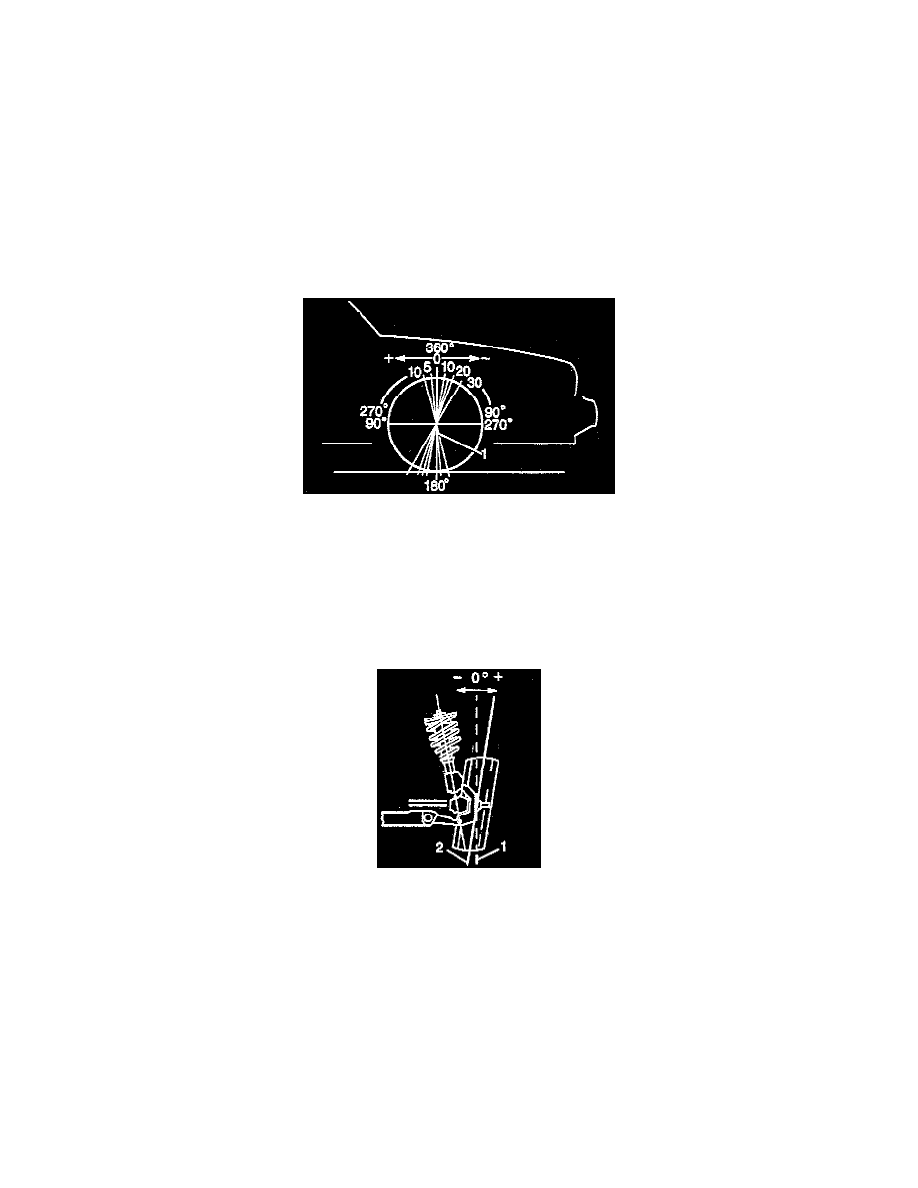Metro L3-061 1.0L VIN 6 TBI (1998)

Alignment: Description and Operation
General Description
Wheel alignment refers to the angular relationship between the wheels, the suspension attaching parts, and the ground. The angle of the knuckle away
from vertical view (when viewed from front of the vehicle) and the tilt of the suspension members from vertical (when viewed from the side of the
vehicle) are involved in alignment.
A complete wheel alignment check should be performed when a service check is deemed necessary. A complete wheel alignment includes the
measurement of all four wheels. Four wheel alignment assures that all four wheels will be running in precisely the same direction.
When the vehicle is geometrically in alignment, fuel economy and tire life are increased and steering and performance are maximized.
Caster Description
Caster is the biting the upper most point of the steering axis either forward or backward from the vertical (when viewed from the side of the vehicle). A
backward tilt is positive (+) and a forward tilt is negative (-). Caster influences directional control of the steering, but does not affect tire wear.
Caster is affected by vehicle height; therefore, it is important to keep the body at its designed height. Overloading the vehicle or a weak or sagging rear
spring will affect the caster. When the rear of the vehicle is lower than its designed trim height, the front suspension moves to a more positive caster. If
the rear of the vehicle is higher than its designated trim height, the front suspension moves to a less positive caster.
Camber Description
Camber is the tilting of the wheels from the vertical when viewed from the vertical when viewed from the front of the vehicle. When the wheels tilt
outward at the top, the camber is positive (+) (2). When the wheels tilt inward, the camber is negative (-). The amount of tilt measured in degrees from
the vertical is the camber angle. Camber influences both directional control and tire wear.
Toe Description
